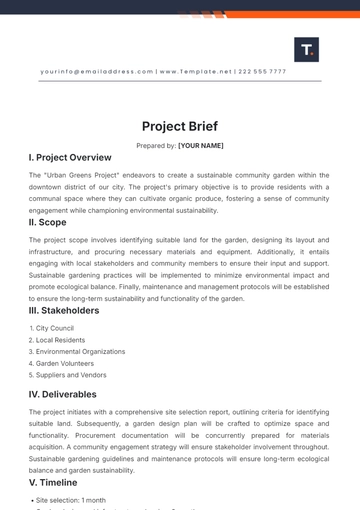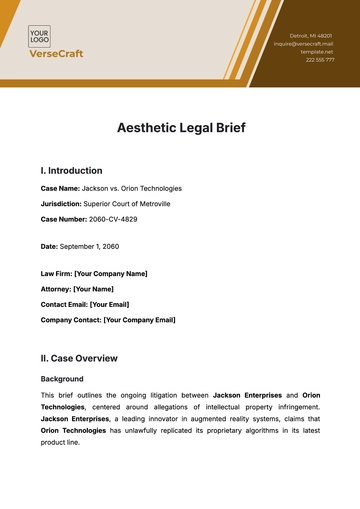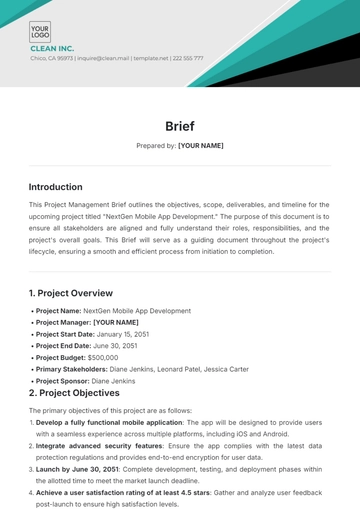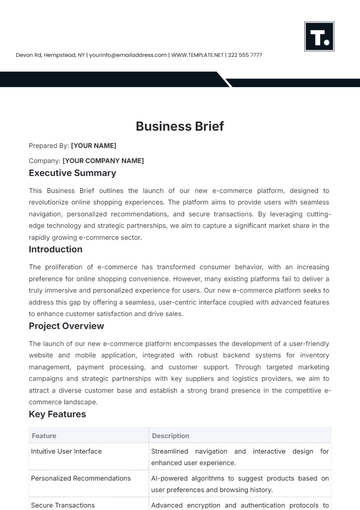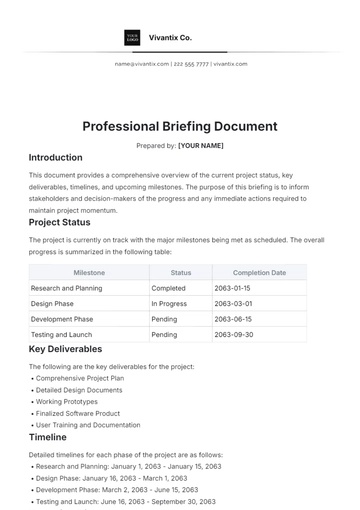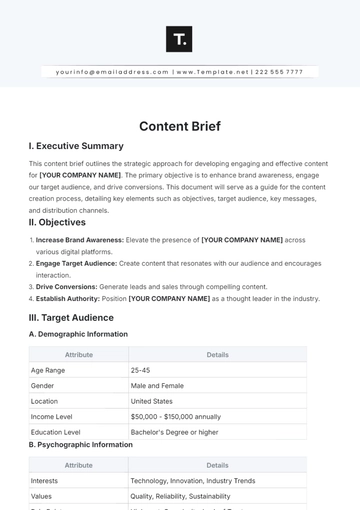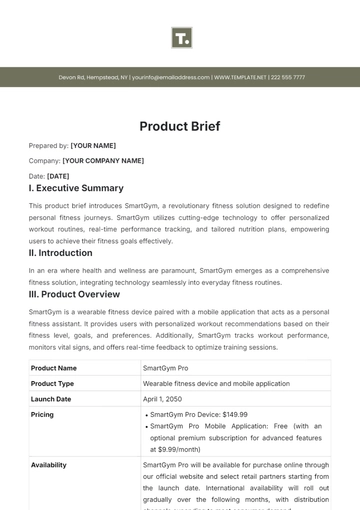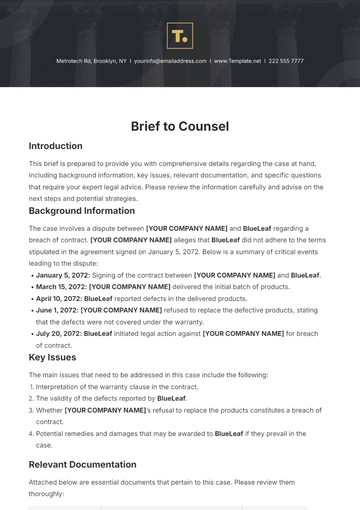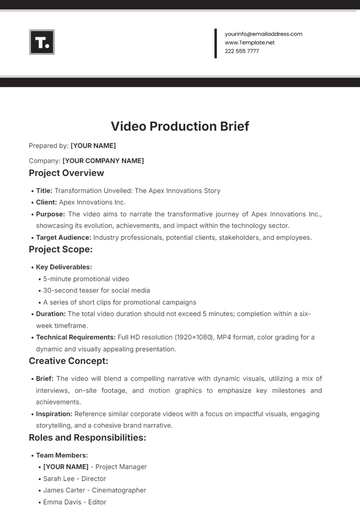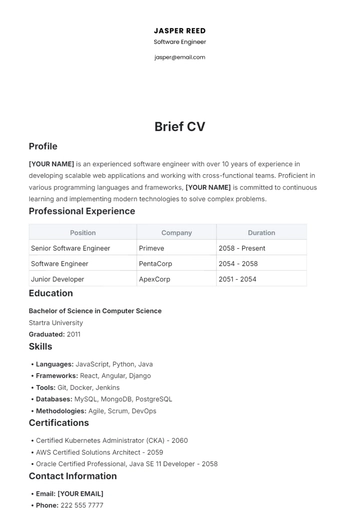Free Criminal Investigation Case Brief

Prepared by: [YOUR NAME]
I. Case Summary
In the case of [CASE TITLE], the defendant, [DEFENDANT'S NAME], is charged with aggravated assault and battery following an altercation at a local bar on [DATE OF INCIDENT]. The criminal investigation began when the victim, [VICTIM'S NAME], reported to the police that [DEFENDANT'S NAME] had assaulted her during an argument. Law enforcement officials arrived at the scene, interviewed witnesses, and collected evidence, including surveillance footage from the bar.
The prosecution alleges that [DEFENDANT'S NAME] intentionally assaulted [VICTIM'S NAME], causing her serious bodily harm. They rely on witness testimony, medical reports documenting [VICTIM'S NAME]'s injuries, and the surveillance footage showing [DEFENDANT'S NAME] engaging in a physical altercation with [VICTIM'S NAME]. However, upon thorough examination of the case materials, several potential weaknesses and avenues for defense have been identified, including inconsistencies in witness statements and the possibility of self-defense.
II. Key Facts
Incident Date: [DATE OF INCIDENT]
Location: [LOCATION OF INCIDENT]
Defendant: [DEFENDANT'S NAME]
Charges: Aggravated assault and battery
Key Witness
Witness | Description |
|---|---|
[VICTIM'S NAME] | Alleged victim, claims to have been assaulted by [DEFENDANT'S NAME] |
[WITNESS' NAME] | The witness, present at the bar during the incident, provided a statement to the police |
Evidence
Evidence | Description |
|---|---|
Surveillance Footage | Captured the altercation between [DEFENDANT'S NAME] and [VICTIM'S NAME] |
Medical Report | Documented [VICTIM'S NAME]'s injuries sustained during the altercation |
III. Legal Issues
Issue 1:
Whether the actions of [DEFENDANT'S NAME] constitute aggravated assault under state law.
Relevant legal principle: The definition of aggravated assault and the elements required for conviction.
Issue 2:
Whether [DEFENDANT'S NAME] acted in self-defense during the altercation with [VICTIM'S NAME].
Relevant legal principle: The right to self-defense and the reasonable belief of imminent harm.
IV. Prosecution's Case
The prosecution contends that [DEFENDANT'S NAME] intentionally assaulted [VICTIM'S NAME], causing her serious bodily harm. They intend to prove the elements of aggravated assault by presenting witness testimony from [VICTIM'S NAME] and [WITNESS' NAME], as well as medical evidence documenting [VICTIM'S NAME]'s injuries. The prosecution's case relies heavily on the surveillance footage from the bar, which shows [DEFENDANT'S NAME] engaging in a physical altercation with [VICTIM'S NAME], allegedly without provocation. However, there are potential weaknesses in their case, including inconsistencies in witness statements and the possibility that [DEFENDANT'S NAME] acted in self-defense.
V. Defense Strategy
In response to the prosecution's case, the defense strategy will focus on challenging the prosecution's narrative and raising doubts about [DEFENDANT'S NAME]'s guilt. This will involve cross-examining the prosecution's witnesses, including [VICTIM'S NAME] and [WITNESS' NAME], to highlight inconsistencies in their statements and credibility issues. Additionally, the defense will seek to establish that [DEFENDANT'S NAME] acted in self-defense during the altercation, presenting evidence and testimony to support this claim. By exploiting weaknesses in the prosecution's case and presenting a strong defense, the defense aims to secure a favorable outcome for [DEFENDANT'S NAME].
VI. Conclusion
In conclusion, the Criminal Investigation Case Brief provides a comprehensive overview of the case against [DEFENDANT'S NAME]. By analyzing the key facts, legal issues, and weaknesses in the prosecution's case, the defense can formulate a strong defense strategy to vigorously advocate for [DEFENDANT'S NAME]'s rights and ensure a fair trial.
- 100% Customizable, free editor
- Access 1 Million+ Templates, photo’s & graphics
- Download or share as a template
- Click and replace photos, graphics, text, backgrounds
- Resize, crop, AI write & more
- Access advanced editor
Enhance your investigative prowess with Template.net's Criminal Investigation Case Brief Template. Tailored for legal professionals, this customizable and editable template streamlines your case analysis process. It also offers a comprehensive framework to organize evidence, suspects, and findings seamlessly. With our AI Editor Tool, effortlessly customize and adapt the template to your specific case requirements.


